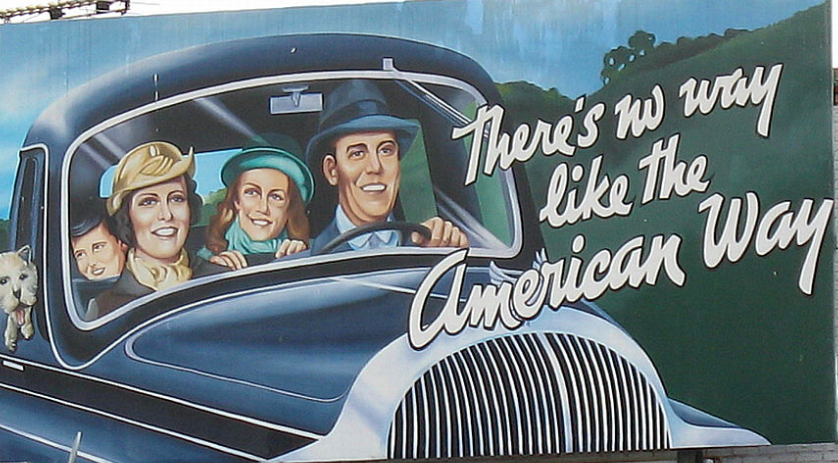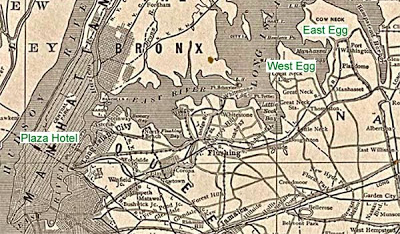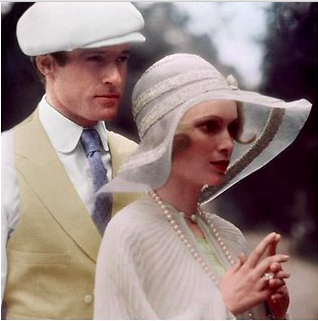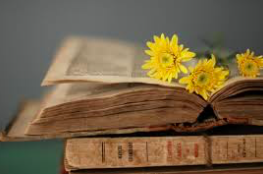- Describe three key characters and how they change in the novel.
- Explain what each character helped you to understand about illusion in the novel.Use quotes to support your ideas.
- Describe three important relationships in the text and explain what they revealed about illusion. Use quotes to support your answers.
ONE
JAY GATSBY- When we eventually get to meet Gatsby in Chapter 3, we begin to learn more about his past and how he got where he is. Before James Gatz when to war, he was a young man stuck in poverty, who looked like he had no opportunities in front of him. He detested being poor and held a big wish to be a wealthy sophisticated man, so Gatsby took it upon himself to change his life for the better.“His parents were shiftless and unsuccessful farm people — his imagination had never really accepted them as his parents at all. The truth was that Jay Gatsby of West Egg, Long Island, sprang from his Platonic conception of himself.He was a son of God — a phrase which, if it means anything, means just that — and he must be about His Father’s business, the service of a vast, vulgar, and meretricious beauty. So he invented just the sort of Jay Gatsby that a seventeen-year-old boy would be likely to invent, and to this conception he was faithful to the end” He became that wealthy sophisticated man he always hoped to be, but not for himself, for Daisy; the girl he’s been madly in love with but has never been able to have. He has a big unreachable dream to have Daisy for himself; however, Gatsby was unaware he wasn’t the man made for his dreams. Fitzgerald’s makes his life begin to unravel when his one hope begins to cloud over.“If it wasn’t for the mist we could see your home across the bay…You always have a green light that burns all night at the end of your dock.” The dream has been the last brick holding his life together and when it begins to crumble, everything comes tumbling down. It had been blinding him and he wasn’t ready for what was to come “He must have looked up at an unfamiliar sky through frightening leaves and shivered as he found what a grotesque thing a rose is and how raw the sunlight was upon the scarcely created grass. A new world, material without being real, where poor ghosts, breathing dreams like air, drifted fortuitously about . . . like that ashen, fantastic figure gliding toward him through the amorphous trees.”
NIC CARRAWAY- “In my younger and more vulnerable years, my father gave me some advice…’Whenever you feel like criticising anyone,” he told me, “just remember that all the people in this world haven’t had the advantages that you’ve had.’ ”
THREE
GATSBY AND DAISY- Gatsby tragically fell for Daisy and her wealthy lifestyle.He became completely obsessed with her, so much that he committed illegal crimes to reach the lifestyle he thought he would need. He set himself up to fail in what he imagined would be the ‘perfect life’ that turned into an ill-fated love story. Gatsby couldn’t forget the past, he even began to live it. His past held the most hope for Daisy, even though he still pictured her strongly in his future. Jay can’t let go of the memories as it is the only thing Daisy really believes they will ever have. She thought he would be hidden in her past, that she could make a new life for herself. This let Gatsby down immensely, but this just motivated him even more, he had to have her. However, Gatsby was much more invested than Daisy would ever be. “We haven’t met for many years,” said Daisy, her voice as matter-of-fact as it could ever be. “Five years next November.” This shows they are on an unequal footing within their relationship, Gatsby is only a memory for Daisy, it’s all he ever will be. He was so obsessed that he knew the exact dates they met and we reunite again; he even ignored the fact she had a husband and child she loved. This shows how strong the illusion he had put himself under.When the two meet once again, Gatsby’s reaction is very strong, his mood dramatically changed, for his dream looked like it could become a reality. However, Daisy’s was quite dissimilar, she hardly changes, bar from a few overwhelming tears. Daisy shows a soft side for Gatsby in the form of guilt, in the t-shirt scene:”They’re such beautiful shirts,” she sobbed, her voice muffled in the thick folds. “It makes me sad because I’ve never seen such—such beautiful shirts before.” She felt bad that he has put in so much effort for her but she can never commit; Daisy is not strong enough to leave Tom. She believes she can’t live up to the high expectations he imagined they could be. He was so caught up in it all, he unconsciously offers to cover up her murder of Myrtle. Even after rejection he still believes he can get her. However, it’s hard to judge Daisy for her decision as we never see her side of the story as Nick has a main focus on Gatsby.
NICK AND GATSBY- There is some contradictory within Gatsby and Nick’s friendship. Gatsby uses Nick in the final steps of his dream. As Nick is Daisy’s cousins, Gatsby felt that by using Nick, he would be able to get her attention (along with all the gargantuan parties.) While Nick knows and still allows to be benefitted from, he is also analysing Gatsby’s every move. He becomes very intrigued by the life Gatsby lives, and he also realises how fond Gatsby is of him. This is one of the many reasons Nick begins to trust Gatsby, along with “one of those rare smiles with a quality of eternal reassurance that you may come across four or five times in life.” However, Nick is the narrator of the novel so it would be unfair to make a judgement on behalf of Gatsby as we don’t really get an insight into his inner thoughts. Nick is, however, the first one to see through Gatsby’s fake persona he has been stringing together for so long; Nick’s seen holes in Gatsby’s materialistic life and been waiting for that string to snap. One of the things Gatsby is pursuing the dream for, is the easy happiness he found when meeting Daisy, and Nick discovered this; this is why he has no problem with helping him achieve it. He admires Gatsby, because of he himself, is such a realist and wishes he had an aspiration in life like Gatsby does. Nick looks up to how motivated and determined Gatsby is just for a single dream.
JORDAN AND NICK- At first we are led to believe that Jordan and Nick’s relationship is very different and disconnected to all the other relationships in the book. They were the only couple that didn’t know each other before the book’s setting. It was in chapter 3 and 4 that they became very close and Nick thought Jordan could end up being a part of his life. Nick was greatly attracted to Jordan’s full beauty, and also her cool, calm way to life; compared to Gatsby’s attraction to Daisy’s money and lifestyle. However, her carelessness was the trait that he grew to hate, after seeing the real lives of Jordan, Daisy and Tom. Their relationship had been going great, until Daisy and Gatsby, Tom and Myrtle became closer and were becoming the main focus of the story; Nick and Jordan got left behind and forgotten about. By the time that they tried to restart together, they no longer saw each other the same as they used to. Nick had been spending too much time with the East Eggers, and actually discovered he hated their personalities. He becomes disgusted in the way Jordan acts, especially after Myrtle’s death, no one seemed to comprehend that someone had actually died. However, Jordan comes back with saying Nick was never truly honest, particularly to himself. When they first began to see each other, Jordan said to Nick: “I hate careless people. That’s why I like you.” But then Jordan begins to see him as a more careless man and this leads us to believe she followed her word. These two main characters were the only relationship that broke up because two people made a smart but obvious decision and were allowed to walk away. The other two relationships ended with one of the lovers being murdered. He used to love the carelessness and fast paced wealthy life, but now despises the lack of morality and care for others they all hold.








